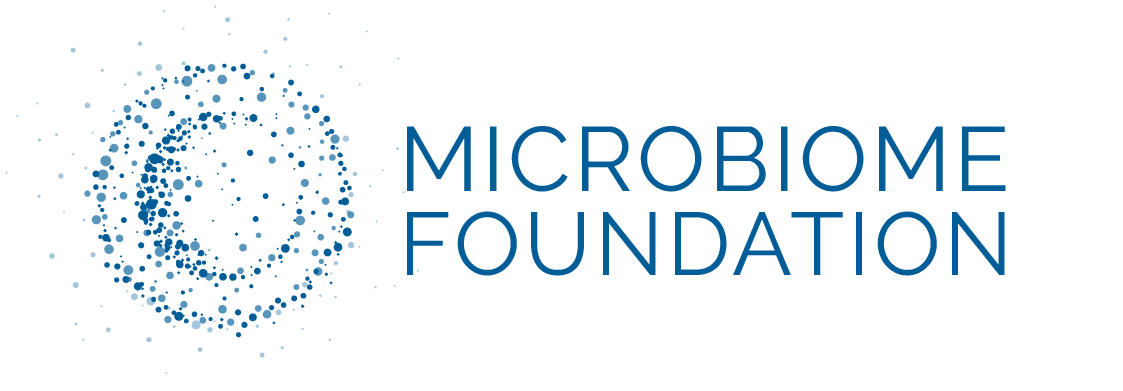The gut microbiota is currently considered a major key factor in the pathogenesis of obesity. At present, researchers working on this pathology have clearly established that it involves changes in the composition of the gut microbiota (dysbiosis). However, it is not possible to conclude based on the bacterial composition in these results (not easily reproducible from one study to another) that one and the same microbiota profile is always present in obesity (see link to previous survey). However, certain bacteria in the gut share common metabolic functions or activities that may contribute to perpetuating the pathology. Several studies have focused on bacterial metabolites, molecules produced by the bacteria in the gut that can act on our body.
Short-chain fatty acids
Nutrients (carbohydrates, proteins, etc.) provided by our food are a source of energy for the gut microbiota. The latter has the ability to use these nutrients and to extract sufficient energy from them to survive. For example, intestinal bacteria are responsible for the degradation of indigestible polysaccharides (carbohydrates also known as “dietary fiber”). This use of fiber by the intestinal bacteria leads to the production of specific molecules or metabolites called short-chain fatty acids (SCFAs). The latter, which are the result of the degradation of certain nutrients, can be useful to us as a source of energy (this is the case for butyrate, one of the most common SCFAs). The gut microbiota of obese patients is known to have a greater quantity of genes for degradation, which suggests that they have a greater ability to extract energy from the diet (and thus to produce more SCFAs) than non-obese subjects.1,2 Experimental studies on obese human and animal subjects have shown that increased production of SCFAs provides additional calories to the host, thereby leading to weight gain.3 However, Murphy and colleagues have found that, compared to lean individuals, the production of SCFAs in genetically obese mice (ob/ob) only increased significantly after seven weeks and that the level of acetate (another common type of SCFA) gradually decreased. These results suggest a lack of stability in SCFAs over time;4 also, it appears that the link between the composition of our gut microbiota and levels of SCFAs is much more complex than assumed since no significant association was found between them.4 Moreover, SCFAs also seem to perform other roles, in particular at the metabolic level (glucose production) as well as in regulating the host’s food intake. In fact, some of our organs – our gut, muscles, liver, pancreas, and adipose tissue – are sensitive to bacterial SCFAs.5 For example, some bacterial SCFAs can stimulate the secretion of anorexigenic (appetite-suppressing) hormones synthesized by the gut (GLP-1, PYY) and adipose tissue (leptin). Obese patients have smaller quantities of the anorexigenic hormones PYY and GLP-1.6,7 Some SCFAs even have the ability to act directly on regulating our food intake.8 Finally, an abundance of certain bacteria in the microbiota (Bacteroides/Prevotella – increased in obesity) is linked to the release of another hormone, one that stimulates hunger (orexigenic).9,10 As a result, the SCFAs produced by the microbiota can act at various levels to modulate dietary intake. However, further studies are needed to better characterize the clinical-biological profiles of SCFAs in obesity.
Bacterial lipopolysaccharide (LPS) and low-grade inflammation in obesity
So-called low-grade inflammation in obesity is also associated with the complications seen in this pathology (cardiovascular disease, type 2 diabetes).11,12. Changes in the composition of the gut microbiota in obese patients lead to increased production of lipopolysaccharide (LPS) and increased permeability of our intestinal epithelium. 13. LPS, which is a component of the membranes of some bacteria, may trigger an inflammatory response and could be responsible for the insulin resistance (a process leading to an increase in blood glucose) seen in obesity.1414. Mice that are injected with LPS have increased body weight and greater visceral and subcutaneous adiposity associated with other complications (increased fasting blood sugar levels, increased lipid infiltration of the liver, and so on) than mice that have not been injected. 13.
Implication of the gut microbiota in the storage of body fat
The gut microbiota seems to have a powerful influence on the body’s use (/degradation) of fatty acids. Indeed, compared to mice with a microbiota, germ-free mice fed a high-fat diet (HFD) showed higher levels of a key enzyme involved in fatty acid degradation (adenosine monophosphate kinase: AMPK) in the liver and skeletal muscles. AMPK is a crucial enzyme that plays an important role in energy homeostasis. Increased levels of AMPK lead to a stronger degradation of fatty acids.15,16 Its inhibition by the gut microbiota promotes the synthesis of cholesterol and triglycerides, thereby promoting lipogenesis, which leads to obesity through excess fat storage.17 It is tempting to speculate that the specific gut microbiota in pre-obese subjects may have a stronger suppressive effect on AMPK activity, making the body more vulnerable to obesity.18
Influence of the gut microbiota on the metabolism of bile acids
The bile acids secreted by the liver play a key role in the digestion and absorption of fatty acids in the small intestine. Primary bile acids are produced by hepatocytes from cholesterol and excreted in the bile that is then released in the intestine. In the intestinal lumen, the gut microbiota then converts primary bile acids into secondary bile acids. These secondary bile acids are reabsorbed by our body in the ileum (lower portion of the small intestine) and recirculated to the liver via the portal vein. As a result, modification of the intestinal microbial composition is likely to influence the pool of bile acids. Swann and colleagues have confirmed this idea by showing that mice with a distinct gut microbiota had a specific bile acid profile and thus a different energy metabolism.19 It has been suggested that bile acids may affect lipid and glucose metabolism,20 thereby promoting deregulation of the liver metabolism associated with obesity and insulin resistance and leading to non-alcoholic fatty liver disease (NAFLD – fatty infiltration of the liver). Indeed, transferring gut microbiota from mice made obese by a high-fat diet (HFD) to germ-free recipient mice caused them to develop NAFLD with hepatic lipid levels similar to those in obese mice.21,22 In this way, the gut microbiota can influence bile acid metabolism and ultimately fat storage through a number of signaling mechanisms.
Conclusion
Obesity is a global health problem that is continuing to increase rapidly. It is considered a multifactorial disease and, among other mechanisms, the gut microbiota has recently emerged as an important factor in the pathophysiology of obesity. Indeed, it influences obesity by acting on various mechanisms that are essential to energy homeostasis, including LPS-stimulated inflammation, bile acid metabolism, SCFA metabolism, and fat deposition. However, to date, it is not known which bacterial community contributes most to the pathophysiology of obesity. In the future, gut microbiota modulation could be a therapeutic means to help treat obesity. Additional clinical and mechanistic studies are needed to further support the clinical utility and safety of gut microbiota modulation in obesity through probiotics, prebiotics, or fecal microbiota transplantation.
Bibliography
- Cho, I. et al. Antibiotics in early life alter the murine colonic microbiome and adiposity. Nature 488, 621–626 (2012).
- Jumpertz, R. et al. Energy-balance studies reveal associations between gut microbes, caloric load, and nutrient absorption in humans. Am. J. Clin. Nutr. 94, 58–65 (2011).
- Delzenne, N. M. & Cani, P. D. Gut microbiota and the pathogenesis of insulin resistance. Curr. Diab. Rep. 11, 154–159 (2011).
- Murphy, E. F. et al. Composition and energy harvesting capacity of the gut microbiota: relationship to diet, obesity and time in mouse models. Gut 59, 1635–1642 (2010).
- Al-Lahham, S. H., Peppelenbosch, M. P., Roelofsen, H., Vonk, R. J. & Venema, K. Biological effects of propionic acid in humans; metabolism, potential applications and underlying mechanisms. Biochim. Biophys. Acta 1801, 1175–1183 (2010).
- Qin, J. et al. A metagenome-wide association study of gut microbiota in type 2 diabetes. Nature 490, 55–60 (2012).
- Vrieze, A. et al. The environment within: how gut microbiota may influence metabolism and body composition. Diabetologia53, 606–613 (2010).
- Frost, G. et al. The short-chain fatty acid acetate reduces appetite via a central homeostatic mechanism. Nat. Commun. 5, 3611 (2014).
- Queipo-Ortuño, M. I. et al. Gut microbiota composition in male rat models under different nutritional status and physical activity and its association with serum leptin and ghrelin levels. PloS One 8, e65465 (2013).
- Zhang, H. et al. Human gut microbiota in obesity and after gastric bypass. Proc. Natl. Acad. Sci. U. S. A. 106, 2365–2370 (2009).
- Emerging Risk Factors Collaboration et al. C-reactive protein, fibrinogen, and cardiovascular disease prediction. N. Engl. J. Med. 367, 1310–1320 (2012).
- Spranger, J. et al. Inflammatory cytokines and the risk to develop type 2 diabetes: results of the prospective population-based European Prospective Investigation into Cancer and Nutrition (EPIC)-Potsdam Study. Diabetes 52, 812–817 (2003).
- Cani, P. D. et al. Metabolic endotoxemia initiates obesity and insulin resistance. Diabetes 56, 1761–1772 (2007).
- Neal, M. D. et al. Enterocyte TLR4 mediates phagocytosis and translocation of bacteria across the intestinal barrier. J. Immunol. Baltim. Md 1950 176, 3070–3079 (2006).
- Bäckhed, F., Manchester, J. K., Semenkovich, C. F. & Gordon, J. I. Mechanisms underlying the resistance to diet-induced obesity in germ-free mice. Proc. Natl. Acad. Sci. U. S. A. 104, 979–984 (2007).
- Bäckhed, F., Crawford, P. A., O’Donnell, D. & Gordon, J. I. Postnatal lymphatic partitioning from the blood vasculature in the small intestine requires fasting-induced adipose factor. Proc. Natl. Acad. Sci. U. S. A. 104, 606–611 (2007).
- Boulangé, C. L., Neves, A. L., Chilloux, J., Nicholson, J. K. & Dumas, M.-E. Impact of the gut microbiota on inflammation, obesity, and metabolic disease. Genome Med. 8, 42 (2016).
- Dahiya, D. K. et al. Gut Microbiota Modulation and Its Relationship with Obesity Using Prebiotic Fibers and Probiotics: A Review. Front. Microbiol. 8, 563 (2017).
- Swann, J. R. et al. Systemic gut microbial modulation of bile acid metabolism in host tissue compartments. Proc. Natl. Acad. Sci. U. S. A. 108 Suppl 1, 4523–4530 (2011).
- Li, F. et al. Microbiome remodelling leads to inhibition of intestinal farnesoid X receptor signalling and decreased obesity. Nat. Commun. 4, 2384 (2013).
- Le Roy, T. et al. Intestinal microbiota determines development of non-alcoholic fatty liver disease in mice. Gut 62, 1787–1794 (2013).
- Thomas, C. et al. TGR5-mediated bile acid sensing controls glucose homeostasis. Cell Metab. 10, 167–177 (2009).



